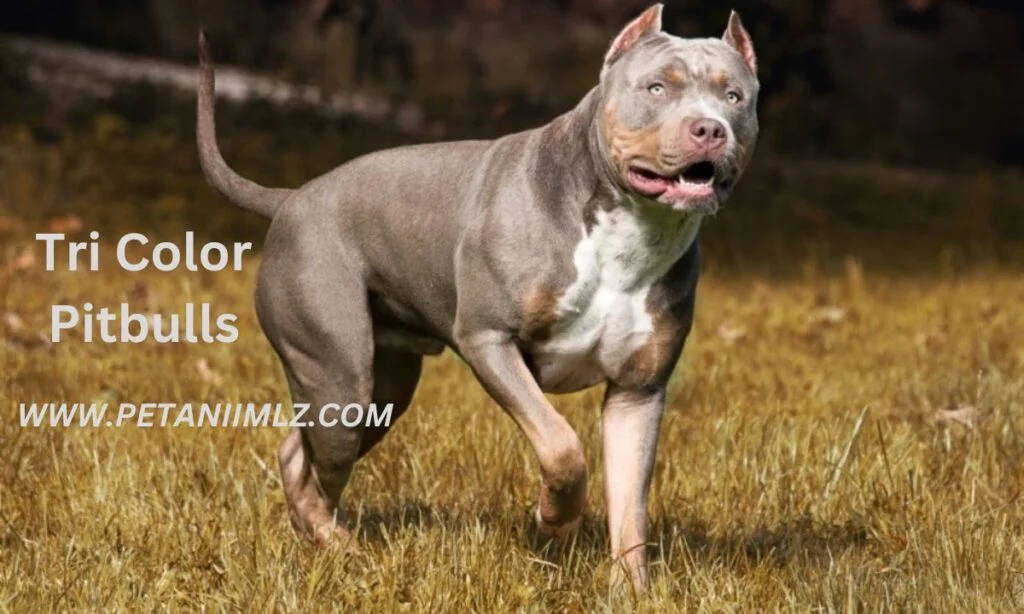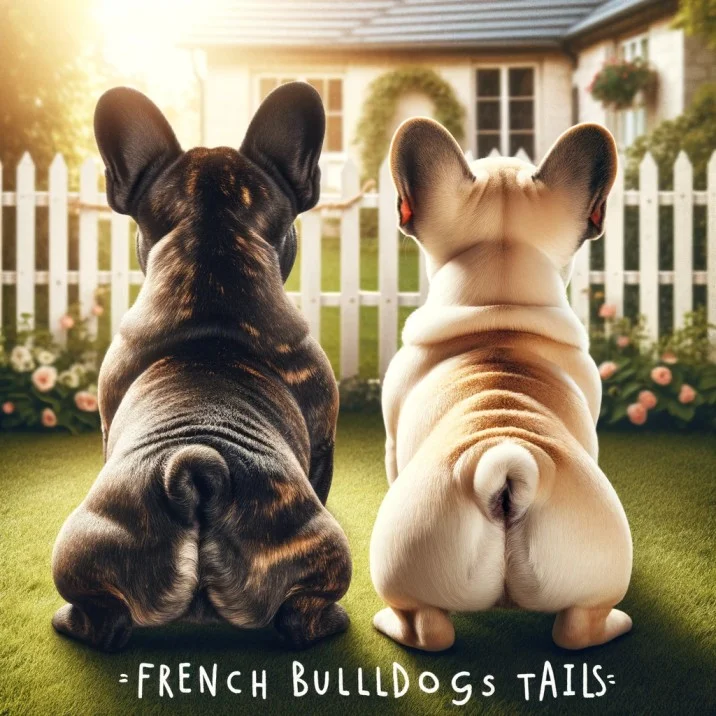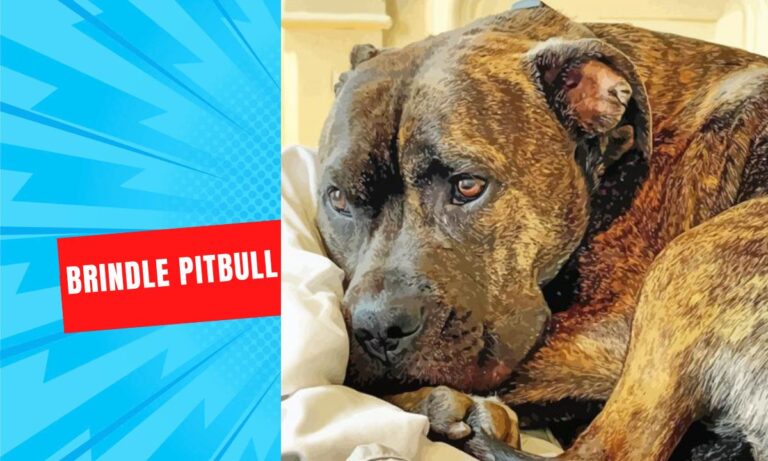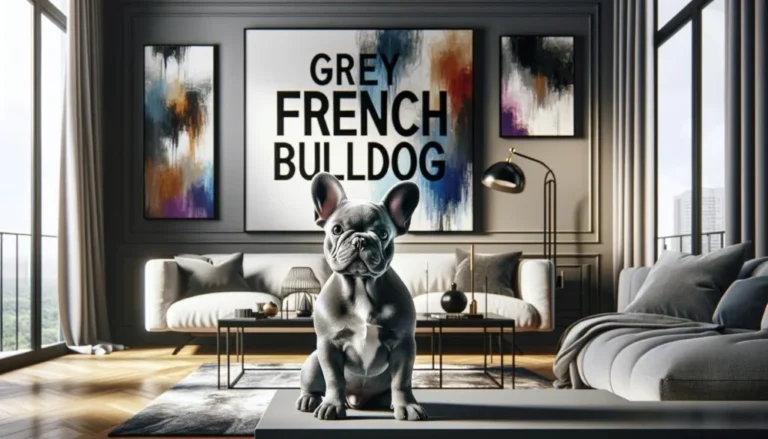Tri Color Pitbulls: Your Complete Guide
Introduction
The Tricolor Pit-bull is an interesting and unique variant of the American Pit-bull Terrier having a rare three-color coat pattern that combines beauty with boldness. This color variation has been in existence for some time, but only recently has it gained immense popularity because it is so visually appealing and also represents charisma. The breed originated from England where pit bulls were bred for bull baiting initially; however, the tri-color gene appeared more carefully due to certain selective breeding resulting in an amazing genetic mix that makes these dogs distinctive in their way.
Usually, Tri-Color Pit-bulls have one main coat color which is accompanied by two other shades often found with tan markings. The blue tri-color variant which is quite rare has become even more sought after due to its compelling mixture of blue, white, and tan colors making this already favored breed much more attractive than before. Moreover, they are loved for being loyal, smart, and affectionate; hence are good family pets even for individuals thus making them a great choice for those looking for companions. Additionally, such attributes have made these animals rare as well as greatly desired friends in the world of dogs owing to their majestic look paired with warm characters.
What Makes a Pitbull “Tri-Colored”?
- Explanation of ‘Tri-Colored’: A tri color Pitbulls has three distinct coat colors, usually consisting of a primary color, secondary color, and markings or “points” in a third color.
- Genetics Behind the Tri-Color Coat: The tri-color pattern is a result of specific genetic combinations, often involving the ‘Agouti’ gene.
- Why Blue is Rare and Sought-After: The blue color is particularly rare and is a diluted form of black, making it highly sought after by enthusiasts and breeders.

Tri Color Pitbull Coat Color Genetics: How Does a Tri Color Coat Develop?
The tri-color coat in Pitbulls is a fascinating subject that involves a blend of genetics and selective breeding. This unique coat color is a result of specific genes interacting with each other to produce a three-color pattern on the dog’s coat.
- Dominant and Recessive Genes: The tri-color coat is often a result of a combination of dominant and recessive genes.
- Agouti Gene: This gene plays a significant role in determining the base coat color.
- Modifier Genes: These genes can influence the intensity and distribution of the colors.
Tri Color Pitbulls History and Origin
The tri-color coat is not a new phenomenon in Pitbulls. It has been around for several generations but gained popularity in recent years due to its unique appearance.
- Selective Breeding: Breeders have been selectively breeding for this trait.
- Not a Separate Breed: It’s important to note that tri-color is not a separate breed but a coat variation within the Pitbull breed.
Tri Color Pitbulls Appearance. How Big Do They Get?
Tri-Color Pitbulls generally have a muscular build and strong physique. They can weigh anywhere from 30 to 85 pounds and stand about 18 to 22 inches tall at the shoulder.
- Coat Colors: The three colors usually consist of a base color, secondary color, and markings.
- Eye Color: Their eye color can vary but is often in harmony with their coat color.
Tri Color Pitbulls Temperament and Personality
Tri-Color Pitbulls are known for their loyalty, intelligence, and affectionate nature.
- Good with Families: They are generally good with children and make excellent family pets.
- Socialization: Early socialization is crucial for a well-rounded temperament.
Tri Color Pitbulls: Training and Exercise
These dogs are energetic and intelligent, making them highly trainable but also in need of regular exercise.
- Mental Stimulation: Puzzle toys and obedience training can keep their minds active.
- Physical Exercise: At least an hour of exercise per day is recommended.
Tri Color Pitbulls Common Health IssuesCOMMON HEALTH CONCERNS IN TRI-COLOR PITBULL
With certain health problems that they may experience that their owners ought to beware of to ensure a long and healthy life for their pets, just like all other Pit-bulls, tri-color Pit-bulls are also susceptible to some dangers. *Hip dysplasia* is one of the most common disorders (which manifests itself as pain and loss of motion). By maintaining body weight within the recommended range and regular health checkups, this condition can be managed.
Short coats make them more prone to suffer from *skin allergies* that show symptoms such as itching, scratches, or bald patches on various parts of the body. The cause of this problem can either be environmental factors like dust or pollens, certain foods that one consumes, or flea infestation. Good grooming practices together with a nutritious food regime will reduce its occurrence.
Another possible issue could be related to *heart disease*, taking into consideration certain genetically based illnesses that some pit bulls may suffer from such as aortic stenosis. Early identification and treatment require regular visits to veterinarian clinics.
Lifespan
The average lifespan of a Tri-Color Pitbull is around 12 to 14 years, which is relatively standard for the breed.
Grooming and Shedding
Tri-Color Pitbulls have a short coat that is relatively easy to maintain.
- Regular Brushing: Helps to remove loose hairs and reduce shedding.
- Bathing: Only as needed, to avoid skin issues.
Tri-Color Pitbull Puppies
- Early Socialization: It’s crucial for puppies to be socialized at an early age.
- Vaccination and Vet Checks: Regular vet visits are essential for a healthy puppy.
Do Tri-Color Pitbull Puppies Change Color as They Grow?
Yes, the coat color can change as the puppy matures. This is due to the interaction of various genes as the dog ages.
Adopting a Tri-Color Pitbull
If you’re considering adopting a Tri-Color Pitbull, it’s essential to do your research and consider the following:
- Adoption Centers: Many Pitbulls, including the tri-color variety, are looking for homes and can be found in shelters.
- Health Checks: Make sure to get a full health screening before adoption.
Tri-Color Pitbull Price: How Much Are Tri Color Pitbulls?
Tri-Color Pitbulls are a unique and sought-after variation of the American Pitbull Terrier. Their distinct coat patterns and colors make them stand out, but how much do they cost? And are they suitable for everyone?
Level of Experience Necessary To Own a Tri-Color Pitbull
- Owning a Tri-Color Pitbull, like any dog, requires a certain level of experience.
- raining and socialization are crucial for a well-behaved pet.
- Potential owners should be familiar with the breed’s temperament and needs.
Are Tri Color Pitbulls Rare?
- Tri-Color Pitbulls are less common than other color variations.
- Their rarity can influence their price, making them more expensive.
Blue Tri Color Pitbull
- A combination of blue, white, and another color (often tan).
- Highly sought after due to its striking appearance.
Blue Tri Color Pitbull Puppies
- Puppies often fetch a higher price due to demand.
- Prices can range widely based on lineage and breeder reputation.
How Much is a Blue Tri Pitbull Worth?
- Depending on lineage, health, and breeder, prices can range from $1,000 to $5,000 or more.
Tri-Color Blue Nose Pitbull
- Similar to the Blue Tri but with a distinct blue nose.
- Often priced similarly to the Blue Tri Color.
Fawn Tri Color Pitbull
- A blend of fawn, white, and another contrasting color.
- Less common than the blue variation but equally beautiful.
Purple Tri Color Pitbull
- A rare and often misunderstood color. It’s more of a deep, rich blue rather than actual purple.
- Highly sought after due to its unique appearance.
Purple Nose Pitbull: Is There Such a Thing as a Purple Nose Pit?
- There isn’t a true “purple nose” Pitbull. The term is often used to describe the deep blue or grayish nose of some Pitbulls.
Black Tri Color Pitbull
- Features black as the dominant color with two other contrasting colors.
- One of the more common tri-color variations.
Chocolate Tri Pitbull
Champagne Tri Color Pitbull
- Dominated by a rich chocolate color with two other hues.
- A favorite among many due to its warm and inviting appearance.
- A light, almost silvery coat combined with two other colors.
- A rarer variation, often fetching higher prices.
Lilac Tri Color Pitbull
- A blend of soft gray or silvery color with two other contrasting shades.
- Another rare variation that’s highly sought after.
Ghost Tri Color Pitbull
- Features a very light or pale base color with two darker contrasting colors.
- Its ethereal appearance makes it a favorite among enthusiasts.
Grey Tri Color Pitbull
- Dominated by a grey hue combined with two other colors.
- A classic and elegant variation of the Tri-Color Pitbull.
Physical Characteristics of Blue Tri-Colored Pitbull
- Size and Build: Generally medium-sized, these dogs have a muscular build, weighing between 30-70 pounds.
- Coat Texture and Color Patterns: Their coat is short and glossy, with a unique blend of blue, white, and another color like tan or brown.
- Eye Color: Often, they have striking blue or hazel eyes that complement their coat.
- Lifespan: With proper care, they can live up to 12-14 years.
Personality Traits: More than Just a Pretty Face
- Intelligence: These dogs are incredibly smart, making them easy to train.
- Loyalty: Known for their loyalty, they form strong bonds with their families.
- Energy Levels: High energy levels mean they love playtime and exercise.
- Social Behavior: Generally social and friendly, they get along well with humans and other pets, debunking the myth that Pitbulls are aggressive.
Health Concerns to Be Aware Of
- Common Health Issues: Like many breeds, they are prone to certain health issues like hip dysplasia and allergies.
- Genetic Predispositions: Some may be genetically predisposed to conditions like heart disease.
- Importance of Regular Vet Check-Ups: Regular vet visits are crucial for early detection and treatment of any health concerns.
How to Care for Your Blue Tri-Colored Pitbull
Taking care of a Blue Tri-Colored Pitbull isn’t just a responsibility; it’s a joy! Here’s how to keep your furry friend happy and healthy:
- Diet and Nutrition: A balanced diet rich in protein, healthy fats, and essential nutrients is crucial. Always consult your vet for personalized dietary advice.
- Exercise Requirements: These energetic dogs need at least an hour of exercise daily. This can include walks, playtime, or even agility training.
- Grooming Tips: Their short coat requires minimal grooming. A weekly brush and occasional bath are usually sufficient.
- Training Advice: Positive reinforcement techniques work best. Consistency is key, and remember, they’re quick learners!
FAQs
·Are Blue Tri-Colored Pitbulls aggressive?
Contrary to popular belief, they are generally friendly and social creatures. Aggression is more about upbringing than breed.
Is it hard to find a Blue Tri-Colored Pitbull?
They are rare but not impossible to find. Reputable breeders and rescue centers are good places to start your search.
What is the lifespan of a Blue Tri-Colored Pitbull?
With proper care, they can live up to 12-14 years.
How rare is a tri-color Pitbull?
Tri-color Pitbulls are relatively rare due to the specific genetic combinations needed to produce the three-color coat. They are not the most common but are increasingly popular.
What is the rarest color Pitbull?
The merle coloration is considered the rarest among Pitbulls, although it’s a subject of some controversy due to associated health issues.
How rare are blue Pit Bulls?
Blue Pit Bulls are less common than other colors but are becoming more popular. Their blue coat is due to a specific genetic trait.
Which bully dog is best?
The term “best” is subjective and depends on what you’re looking for. American Bullies are often praised for their friendly nature and intelligenc
Conclusion
In brief, Tri-Color Pit-bulls are a variant of the well-known Pit-bull breed that has become distinguished for their looks, loyalty, and intelligence over time. Their unique coat patterns with three different colors make them distinctive among other Pit–bulls which explains why they are increasingly popular in society. Regardless of the widespread misconceptions that Pit-bulls are always aggressive creatures by nature; Tri-Color Pit-bulls when properly trained and socialized do make friendly, affectionate, and wonderful family pets.
Commitment to health, exercise, and training requirements is one of the main aspects when owning a tri-color pit bull. Frequent visits to the veterinarian will help detect potential health problems like hip dysplasia, skin allergies, or heart issues before it gets late. With proper living conditions, these animals can have a fulfilling life while building strong ties with their human families.
Whether it is because of their attractive pelt or because they are playful yet affectionate in personality; Tri-Color pit bulls give an attractive appearance and companionship as well. Provided one is willing to spend time on handling and education, such dogs can serve as faithful companions during all adulthood stages leading an active life full of fun alongside their loving owners for many years ahead.





